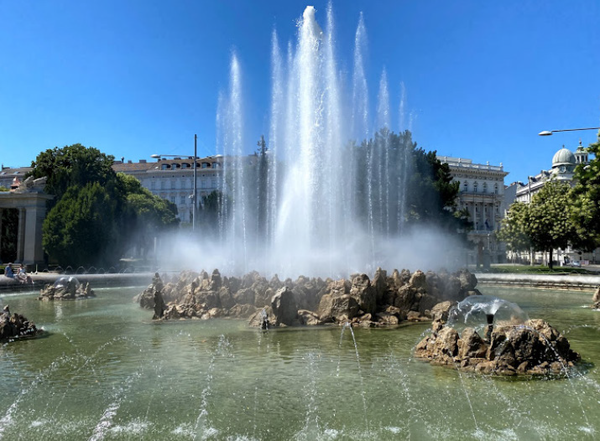
[아츠앤컬쳐] 물, 특히 식수는 우리의 삶에서 가장 중요하다. 좋은 식수는 점점 드물어지고 있는데 그런 면에서오스트리아는 운이 좋은 편이다. 지구는 14억㎢의 물로 덮여 있지만, 그중 3%만이 감수(甘水)이다.
오스트리아 물의 대부분은 알프스 고지대로부터 나온다. 물은 수조에 모아서 각 사용자에게 분배된다. 오스트리아에서는 정수기가 필요 없으며 수도관에서 나오는 물은 수질이 매우 좋다. 사람들은 식당에서도 수돗물을 마신다.
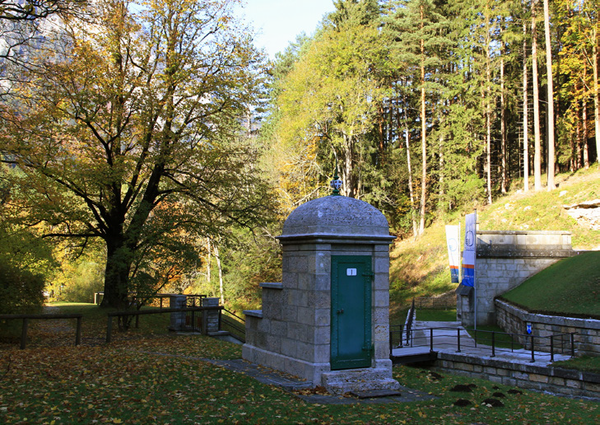
기원전 15년경 로마시대에 빈 지역은 빈도보나라고 불렸다. 인구가 15,000~20,000명인 빈도보나로 물을 공급하기 위해 높은 산의 작은 강으로부터 최초의 수로를 개발하고 연결하여 식수와 난방에 사용하였다. 로마인들은 이미 온돌과 비슷한 개념의 온수 순환의 바닥 난방 시스템을 개발했으나 불행하게도 이 노하우는 로마인들이 오스트리아를 떠난 후에 잊히고 말았다. 이후 지하수만 사용되어 팬데믹이라는 결과를 맞았다. 14세기에 동부지역의 도시와 마을에서 알프스의 깨끗한 물을 사용하는 것이 다시 관심을 받았다.
마티아스 황제(1557~1619)는 사냥여행 중 맑은 샘을 발견하고 그 좋은 수질에 깊은 인상을 받아 항상 신선한 그 물을 마시기 위해 성을 짓기로 결정했다. 이 성이 이른바 쉔부른 여름궁전으로 현재 오스트리아에서 가장 많은 사람들이 찾는 곳 중 하나이다.
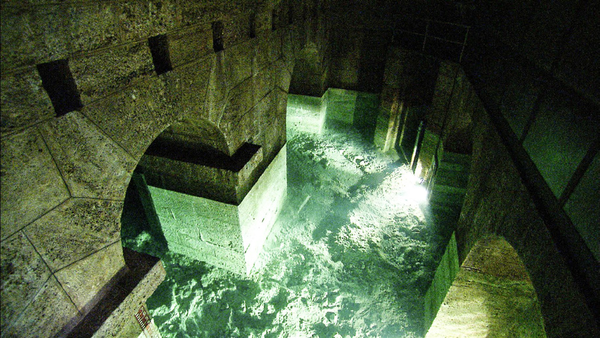
이후 1735년 카를 6세는 겨울궁전(호프부르크)에 신선한 물 공급을 원하여, 68km 떨어진 슈니베르크의 높은 산에서 매일 마차로 36시간씩 운반하여 신선한 물을 실어오라고 명령했다. 1800년에 황제는 더 빠른 물 수송을 위해 근교의 산으로부터 빈으로 수도관 건설을 명하였는데, 이는 궁정뿐만이 아니라 빈의 모든 백성을 위해서였다.
19세기 후반에 슈니베르크의 최고 2,007m 산에 있는 16개의 샘에서 집수하여 빈으로 잇는 최초의 긴 수도관 공사를 시작하여 1873년에 완공했다. 수도관은 길이 105~1,065m의 10개의 수도교와 길이 72~2,700m의 18개의 터널을 포함하여 총 95km에 이르며, 펌프장 없이 자연적으로 흘러, 고도 251m의 ‘라에르베르크’에서 비엔나에 이른다. 이 독특한 수도시설의 상징으로 팔레 슈바르첸버그 앞에 ‘호흐슈트랄브룬넨’이 세워졌다.

2007년에도 이 최초의 수도관은 비엔나의 모든 식수의 53%를 공급했다. 1910년 마지막 황제 프란츠 요제프 2세 치하에서 두 번째 수도관이 건설되었는데, 스티리아의 ‘호흐슈바브’ 지역에서 시작하여 미공급지역과 비엔나 주변 마을 및 미래 수요까지 포괄하는 총 길이 183km의 수로였다.
비엔나에서는 생수를 즐기세요! 또한, 수돗물 외에 천연 스파클링 미네랄워터와 오스트리아의 여러 온천에서 제공하는 아주 희귀한 알칼리성 미네랄워터도 즐기시기 바랍니다.
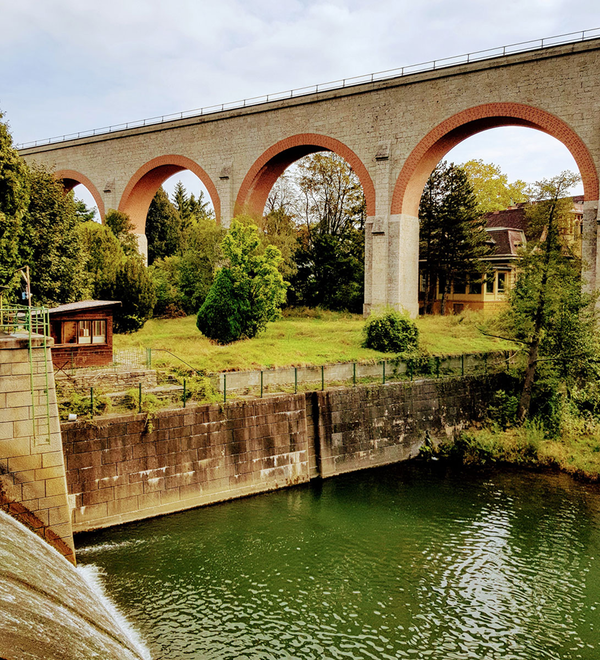
Water
Water, drinking water, is the most important good in our life. Good drinking water is getting rare and Austria is on the lucky side. The earth is covered with 1.4 billion Cubic km of water, but only 3% is sweet water.
Most of the water in Austria is coming from the Alps high region. The water is collected in Cistern and then distributed to the users. In Austria you don’t need a water purifier, the water from the tub is fresh water in high drinking quality, everyone is dinking water from the tub, even at the restaurant.
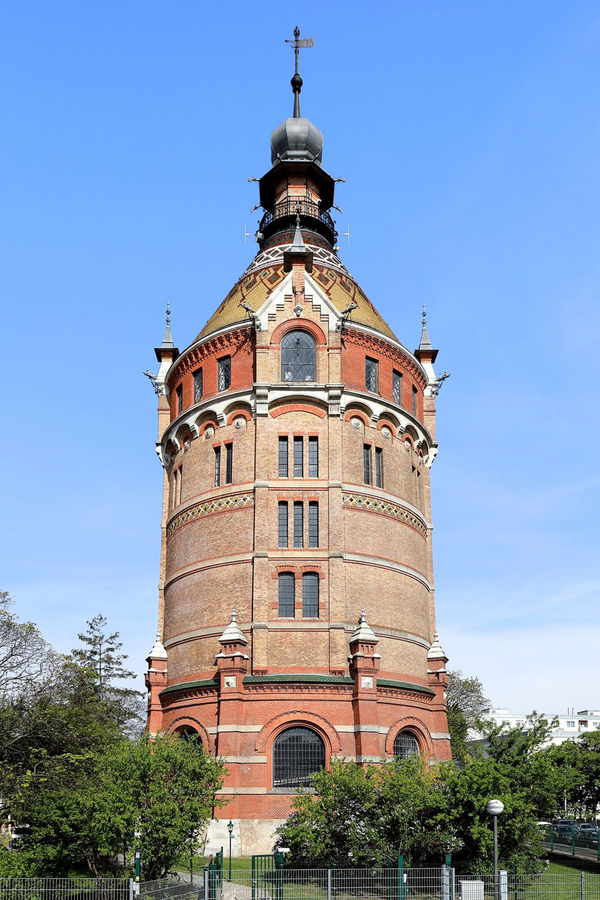
At the Roman times, around 15 BC, Vienna area was called Vindobona I was the first naming of this area. Vindobona had a population of 15.000 to 20.000 people and developed the first water channels in redirecting small rivers from the mountain to feed into Vindobona. The water was used for drinking and heating. Romans had already developed a floor heating system similar to the “Ondol” but based on hot water.
Unfortunately, this knowhow was forgotten after Romans left Austria and the use of clean water from the alps became attractive again within the 14 century in the eastern Area for cities or villages. Up to this time only ground water was used which resulted in large pandemic outbreaks.
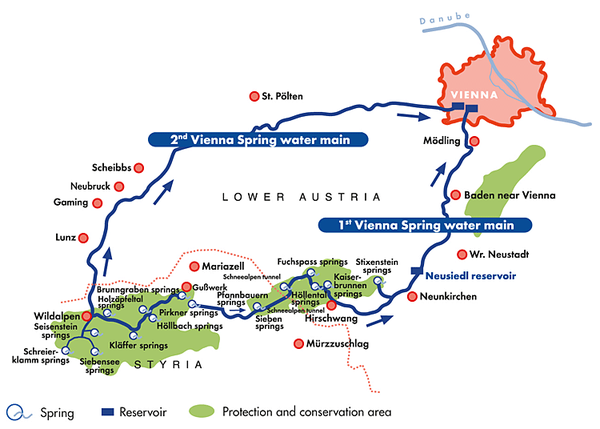
Emperor Mattias (1557 – 1619) discovered at one of his hunting tour a fresh water spring and he was so impressed of the quality that he decided to build a castle to have always fresh drinking water, this castle is called “Schönbrunn” the summer palace and it is now one of the most visited attraction in Austria.
Later at 1735 Emperor Karl VI wanted to have fresh water at the winter palace (Hofburg) and he ordered everyday shipment of fresh water from the highest mountain closed to Vienna the “Schneeberg” which took 36 hours for 68km by horse carriage. In the 1800 the emperor was first ordering a water pipeline from closed mountain to Vienna to bring the fresh water faster to Vienna and not only for court but also for the commons. Later in the century the first long pipeline from the Schneeberg to Vienna was constructed and finished in 1873.
The water is collected from 16 different springs with the highest of 2,007m. The pipeline consists of 10 Aqueducts(Water bridge) with an length from 105 m to 1,065m and 18 tunnels with length between 72m and 2,700m the complete length of the pipeline is 95km, it has no pumping station just natural flow, arriving in Vienna at an altitude 251m at “Laaerberg”. As symbol of this unique water systems the “Hochstrahlbrunnen” in front of the Palais Schwarzenberg was erected.
In 2007 this first water pipeline supplied 53% of all drinking water of Vienna. In 1910 under the last Emperor Franz Josef II the second water pipeline was ordered, starting at the area of the “Hochschwab” at Styria with a total length of 183km to cover the rest of supply needed and the other villages around Vienna and future requests.
Enjoy the Vienna natural Water!
Beside the tap water you can enjoy natural spring water with Natural Sparkling Mineral Water, or the very rare Alkaline Mineral Water supplied of different springs of Austria.
글 | 볼프강 슬라빈스키 Wolfgang Slawinski
서울명예시민, 한·오스트리아협회 부회장

